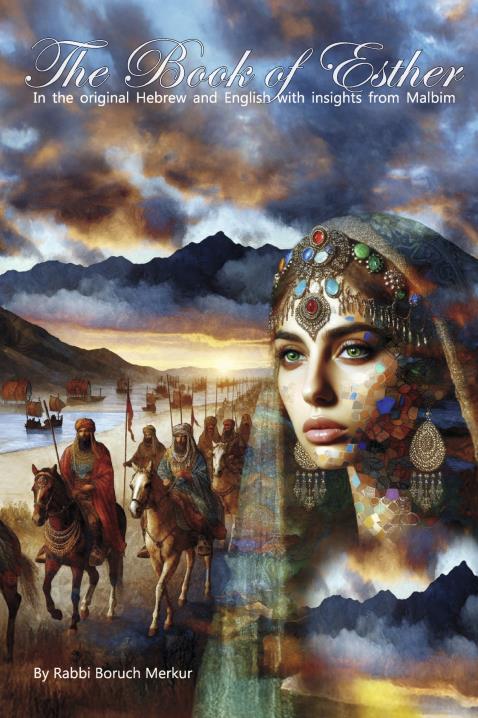-
Why Did The Rebbe Go To His Father-in-Law's Grave?
-
Amongst the nonsense on the internet which some of you may have heard or
read lately, some people are now under the impression that Judaism forbids
prayer ...
6 hours ago
-
-
🔥IRAN HIJACKS, SHIN BET CONFUSION, QATAR-GATE GROWS - Real time from Israel
-
🔥IRAN HIJACKS, SHIN BET CONFUSION, QATAR-GATE GROWS - Real time from
Israel
🅸🆂🆁🅰️🅴🅻 🅁🄴🄰🄻🅃🄸🄼🄴 - "Connecting the World to Israel in
Real...
8 hours ago
-
Amalek: The Source of the Seven Nations
-
[image: ישיבת המקובלים נהר שלום | הרב בניהו שמואלי שליט"א - מלחמת עמלק]
(Continued from here.)
Amalek’s goal in preventing *Daas* of holiness from influ...
13 hours ago
-
"From Darkness Into Light"
-
*1 Nisan 5785Rosh Chodesh*
Excerpted from *The Book of Our Heritage* by Eliyahu Kitov (Vol 2, p.
467)...
One who experiences redemption has emerged fr...
1 day ago
-
Pekudei - Accessing Hashem's Guidance
-
Why did the Jewish people bring the parts of the Mishkan to Moshe to
examine, instead of Moshe going to them? What is the concept of 'bringing
the woven ...
4 days ago
-
The Nightingale Owns a Pruning Shears
-
Yes, it has been a very hard year. So I was looking for some really good
news that would seem to conform with a hard and fast Geulah circumstance
that ...
1 week ago
-
-
Tanya: A Roadmap to All 53 Chapters
-
In honor of Tu B'Shvat, The Garden of Tanya has just been released! Tanya
is the Torah Shebichtav —the Written Torah—of Chassidus Chabad,...
1 month ago
-
October 7th by the Numbers and as a Sign
-
The tragedy and catastrophe of the October 7th Massacre, like everything
else, is hinted to in the Torah and Tanach. For example, as we're in the
Bein H...
8 months ago
-
REDEFINING JEWISH IDENTITY POST OCT 7
-
The Oct. 7 attacks and the subsequent war in Gaza marked a significant
turning point for the Jewish community. These events catalyzed a...
1 year ago
-
The father does understand!
-
*Rabbi Levi Yitzchak of Berdichev*, "The Defending Advocate of Israel," is
fondly remembered for his love and compassion for all Jews.
*Quick Fix*
*Yerach...
1 year ago
-
DARKNESS IMPLODING
-
Darkness implodes into light. * T’filla, d’veikus to Hashem, is a frequency
that transcends conflict. * The ultimate peace of Moshiach, Prince of Peace.
3 years ago
-
The New Lazer Beams at Lazerbeams.com
-
We have moved to a new, beautiful and much more spacious cyber home, your
address for good things only. Please visit us at lazerbeams.com - we look
forward...
3 years ago
-
-
Menachem Av: Not mourning, but yearning
-
We are standing at the threshold of the Era of Mashiach, at the threshold
of the beginning of the Redemption, and in the immediate future, it will be
brou...
5 years ago
-
Ma'ot Chitim – "Wheat Money"
-
In the opening paragraph of the Haggadah recited at the Seder, we declare:
"All who are hungry, let them come and eat." Our nation is a singular
entity, an...
7 years ago
-
Update on Menachem
-
March 14, 2018
Menachem has been moved to a hospital in Jerusalem called
Misgav LaDoch for long term nursing care. If you are in Jerusalem he would
enjoy a...
7 years ago
-
The Straw Man Logical Fallacy
-
Low-grade
Abraham’s Streimel
There is a cute saying that Abraham wore a streimel, a Hasidic ‘hat’, and
before thinking that this is preposterous, pleas...
7 years ago
-
Daniel 12 - Math
-
A post in honor of Lag BaOmer.
I have previously posited the following regarding the prophecy at the end
of Daniel 12:
1. The 1290 days and 1335 days ...
7 years ago
-
The Children Are Talking…!
-
The children have spoken and are speaking again. Ten years ago a six
year-old boy revealed secrets of the Geulah, and they almost materialized.
But “almost...
8 years ago
-
Eliayhu’s Mission
-
The Mishna is Edyut states that Eliyahu comes “not to distance, not to
bring close, but to make shalom.” The mishna is speaking about how Eliyahu
is going ...
9 years ago
-
Still here
-
Don't let our lack of public posts fool you, we are busier, more organized,
and more underground than ever.
We just no longer feel the need to update our...
9 years ago
-
#223 - The Policeman in Charge
-
It's true that I haven't had a chance to post in a long while, but today
marks the first day of the week of the first Parsha of the fifth and final
book of...
10 years ago
-
New Blog - Orach Chayim!
-
B"H! New post at our new blog, come see!
Orach Chayim
Way of Life - Jewish Life - Torah Insights - Current Events
11 years ago
-
My "tickets to emuna" story
-
I sent this story about what happened to me to Mr. Shmuel Greenbaum who
runs Partners in Kindness and he sent it out last month. Since I heard it's
good ...
11 years ago
-
Tikkun Chatzos Online
-
The following text of Tikkun Chatzos was provided by a reader who said he
searched and couldn't find Tikkun Chatzos online. He asked to put this up
for tho...
12 years ago
-
-
Anthony Hopkins Address
-
Anthony HopkinsHollywood ActorBirth Name: Anthony Philip HopkinsBirth Date:
December 31, 1937 at 9:15am-UTBirth Place: Margam, nr. Port Talbot, West
Glamor...
13 years ago
-
התחדשות
-
מסר לשבוע של יא שבט (טו בשבט)
התחדשות
טו בשבט אנחנו חוגגים את ראש השנה לאילנות. גיליתי שיש לנו הרבה מה ללמוד
מןהעצים. העץ גודל, וכשהמזג אוויר קר, יבש, ...
14 years ago
-
-
